Bergen, Norway, is a charming coastal city surrounded by beautiful mountains and deep fjords. Though Bergen is the second largest city in Norway, it retains a charming, small-town feel that belies the dramatic scenery surrounding it.
Bergen packs in plenty for travelers to see and do, with a colorful Hanseatic wharf, the Fløibanen Funicular that climbs Mt. Fløyen, and a vibrant fish market. Compact and easy to navigate on foot, Bergen has a cool art scene, innovative dining, and excellent shopping within its cobbled streets.
From the best time to visit and what to pack, to the must-see sights, arm yourself with an insider’s guide to ensure you experience the best of Bergen.
Why Visit Bergen, Norway
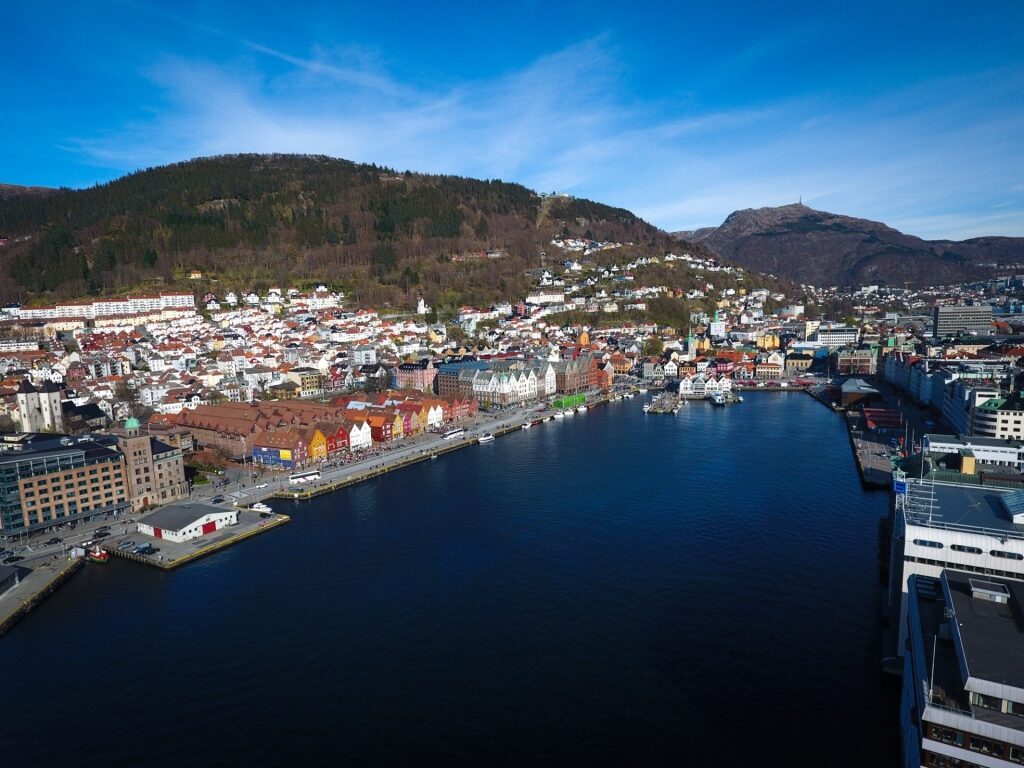
Bryggen
Bergen is known as the capital of the Norwegian fjords because of its location right in the heart of the country’s serrated west coast.
The city is walkable and bikeable, making it easy to explore in a short space of time. It’s a melting pot of art, culture, history, and gastronomy, with galleries, museums, markets, restaurants, and bars to delve into.
For active travelers, hiking trails, boat tours, and watersports, such as rafting and kayaking, offer plenty of endorphin-inducing action. In the city center, history buffs will enjoy spending time in Bryggen’s narrow cobbled lanes. At the same time, visitors who prefer a more sedentary pace have cute cafés and independent shops to browse.
History & Culture of Bergen
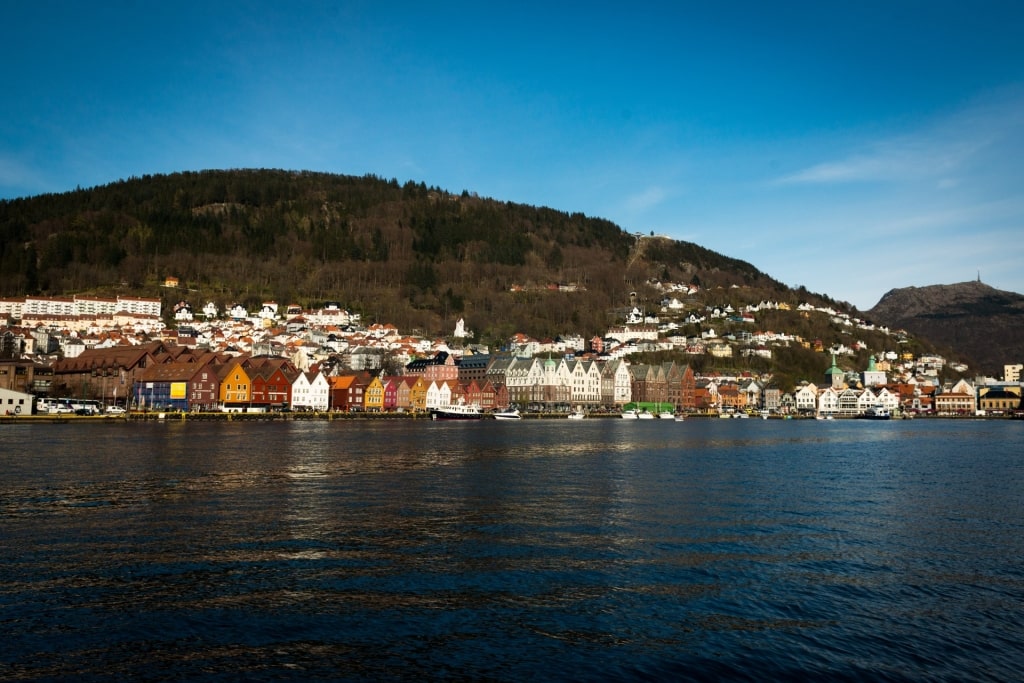
Bryggen
One of Northern Europe’s oldest port cities, Bergen was formed in the late 11th century by Olaf III, the king of Norway, on former Viking settlements. There’s a steel sculpture dedicated to the city’s founding father next to Lille Lungegårdsvannet, a cherry tree-lined lake in the center of Bergen.
Such was Bergen’s importance during the Middle Ages that it enjoyed spells as Norway’s capital between the 11th and 14th centuries and was Norway’s largest city until the 1830s. Bergen also held a prominent position within the Hanseatic League, a network of merchant trading ports that grew across Northern and Central Europe in the Middle Ages, between the 14th and mid-16th centuries.
The best place to learn about Bergen’s backstory is in Bryggen, the city’s historic harbor that was established in the 12th century. This is the place from where Hanseatic merchants traded, occupying the waterfront buildings that became the city’s Hanseatic Office.
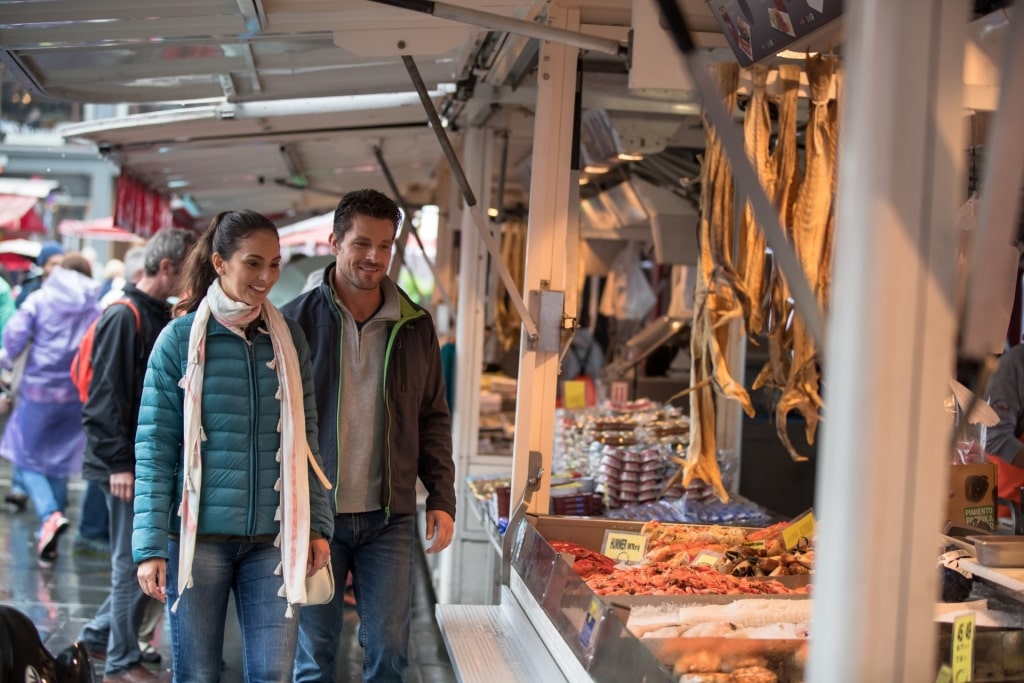
Fish Market
Bryggen is now a UNESCO World Heritage Site and remains the vibrant center of Bergen, with museums, cafés, restaurants, bars, and souvenir shops lining the picturesque streets. Bryggen is just steps away from the city’s famous Fish Market, an outdoor marketplace with newer indoor stalls and restaurants, where locals have been buying fresh seafood since 1276.
Bergen has plenty of historic buildings, including the harbor’s Bergenhus Fortress and the 12th-century St. Mary’s Church. St. Mary’s is the city’s oldest building, featuring two towers, a single nave, four portals, frescoes, and a 17th-century pulpit gifted to the church by wealthy merchants.
Wildlife & Nature
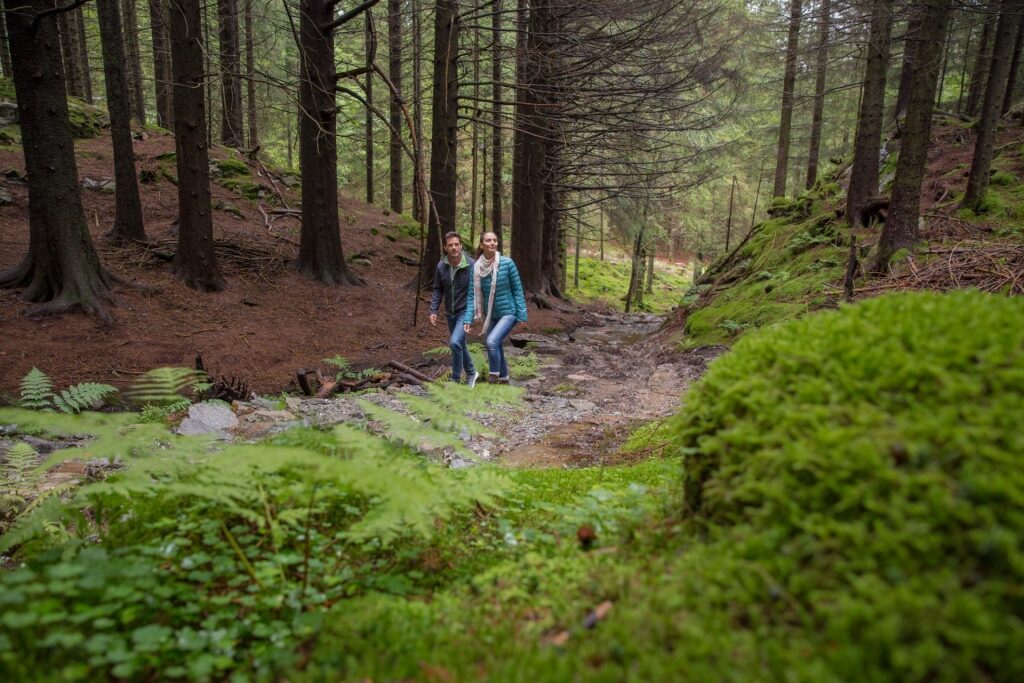
Mt. Fløyen
Between the two largest fjords that Norway is known for—Sognefjord in the north and Hardangerfjord in the south—and seven mountains, Bergen is cradled in nature, with cinematic, dense pine forests and shimmering water. The calm, glacier-carved fjords are home to whales, swooping eagles, languid seals, otters, salmon, and rainbow trout.
Boat tours and kayaking sessions from Bergen are among the ways you can absorb the fjords’ dazzling display of nature.
On dry land, the mossy, fern-lined path on the winding 40-minute hike to the summit of Mt. Fløyen is filled with pine trees, wildflowers, and summer berries. Listen out for a chorus of birds, spot hares darting between trees, and see the cashmere goats with their curled horns grazing on grass as you inhale the fresh mountain air.
Tips for Visiting Bergen
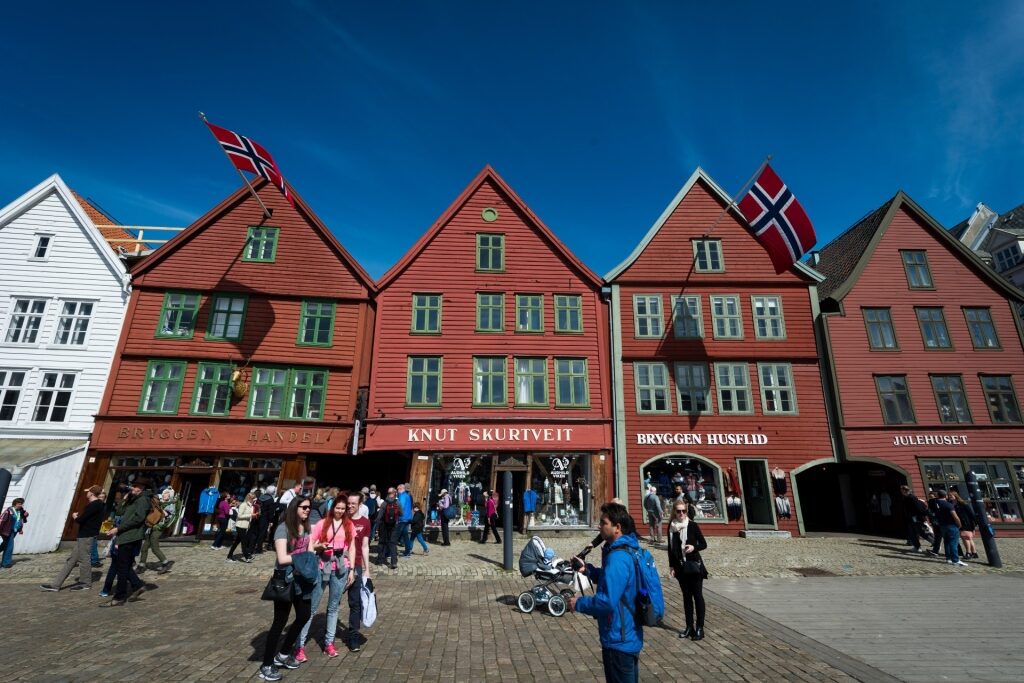
Bryggen
Pack comfortable walk shoes and a rain jacket when visiting Bergen. Though the weather is typically mild, sometimes warm, during summertime, it is also changeable and rain is common. The local currency in Norway is the Norwegian krone (NOK), though credit cards are widely accepted.
Consider renting a bike from Bergen Bike Rent near the waterfront to explore downtown Bergen or further afield on two wheels. A helmet, lock, and map are provided when renting a bike and you have the option of a guided bike tour.
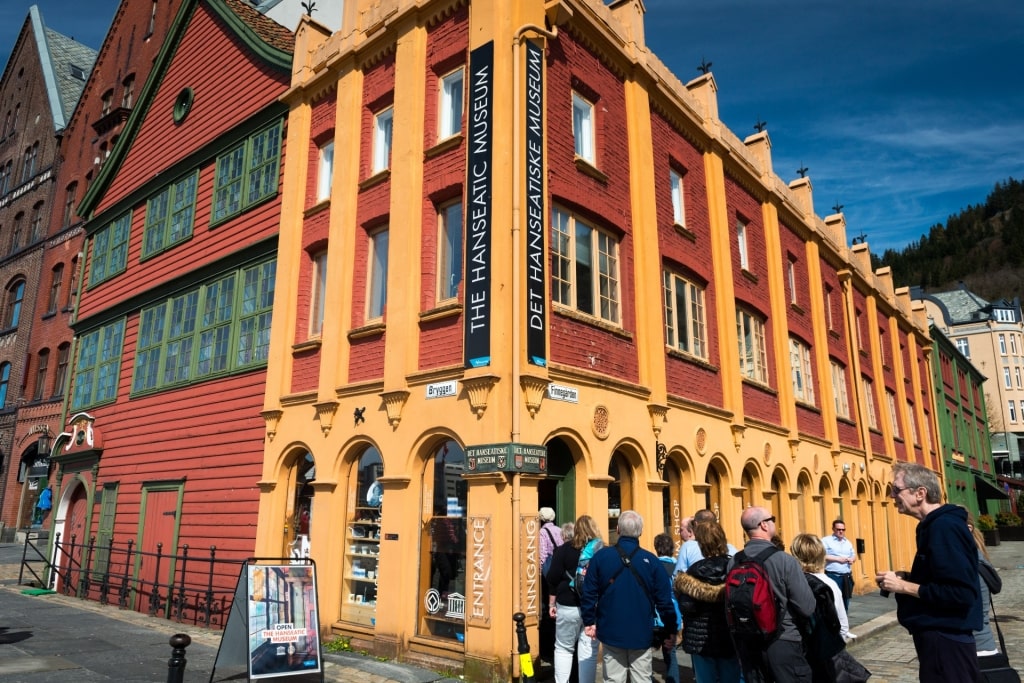
Hanseatic Museum
Whether you walk or cycle, explore the UNESCO-listed Bryggen waterfront neighborhood, including the Hanseatic Museum, before walking around the boat-lined harbor to the Fish Market.
Sample some of Norway’s freshest seafood and glance at the eye-popping bounty, including king crab, lobster, smoked salmon, oysters, and sardines. Pick up some fresh sushi rolls to go and enjoy a harborside seat, facing the water.
Things to Do & Attractions in Bergen, Norway
Wander Quaint Bryggen
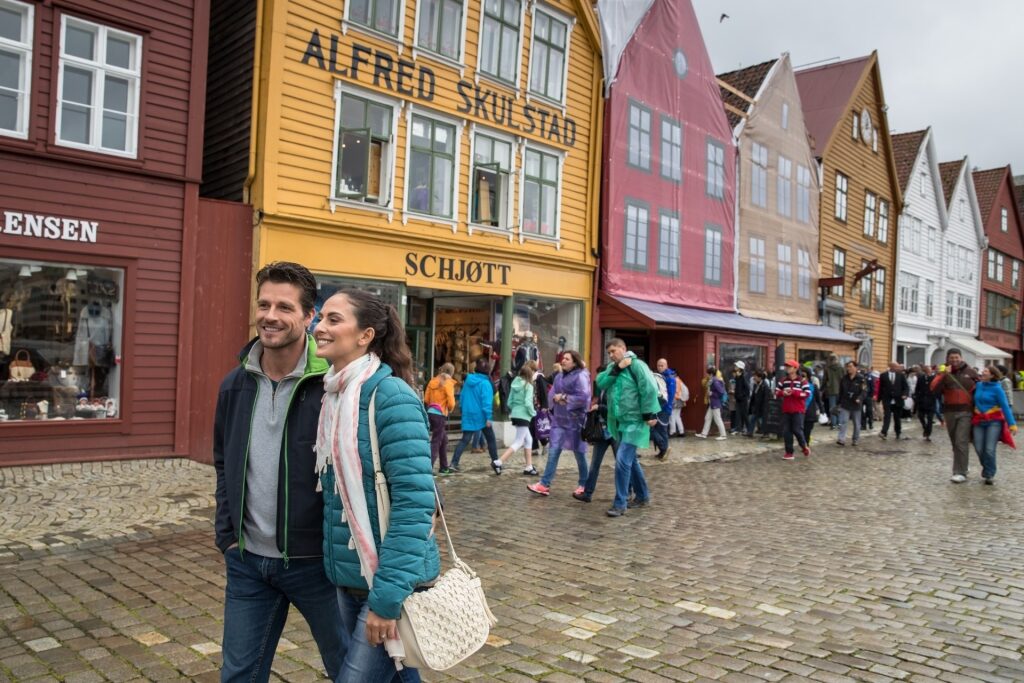
Bryggen
Bryggen is Bergen’s historic trading wharf, a row of mustard-yellow and rust-red wooden buildings that line the harbor, dating back to the period of the Hanseatic League.
Though fires have devastated Bryggen in past centuries, including in 1955, traditional building methods have been used to reconstruct the houses in their original style. Today, around 62 buildings make up this photogenic old quarter parallel to the waterfront.
Stroll the narrow lanes to admire the two- and three-story buildings with their attractive gabled facades and private courtyards, some with brick-tiled roofs, once occupied by German Hanseatic merchants.
Browse the shops, bakeries, and galleries occupying many of the buildings. Take a peek inside the Bryggens Museum, where thousands of medieval artifacts, including inscriptions, pottery, and clothing, are displayed. One of the most fascinating items is the Guddal-garment, an item of clothing considered to be around 1,000 years old.
Explore Bergenhus Fortress
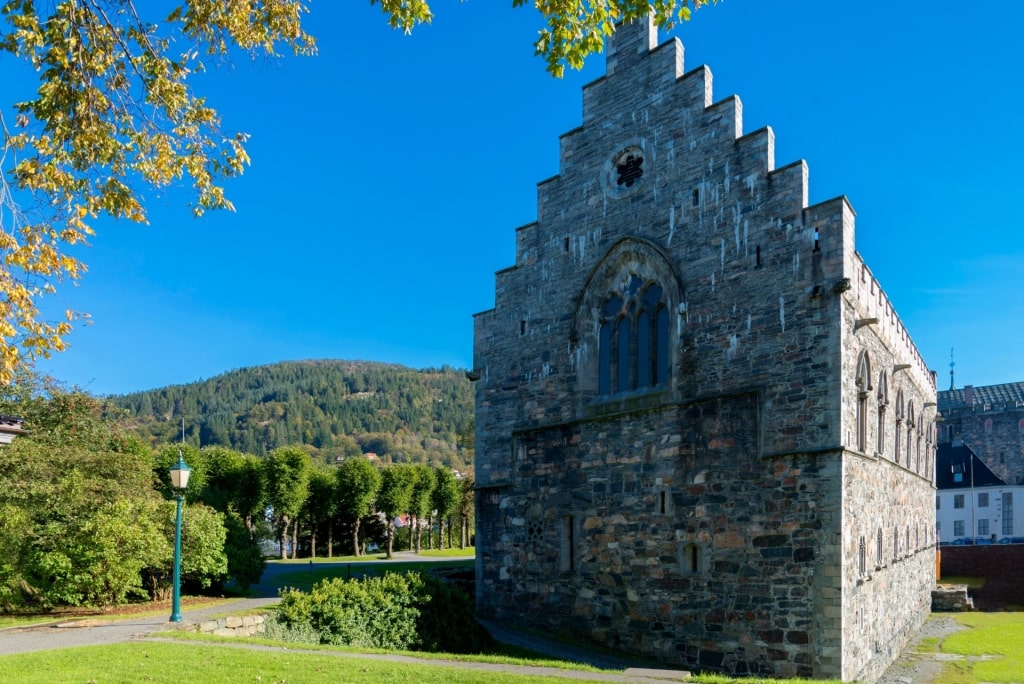
Bergenhus Fortress
This former military base and royal seat at the entrance to Bergen harbor was established in the 13th century and is one of Norway’s oldest and best-preserved fortresses. Ramparts were added in the 1700s to consolidate the fortress, though some were torn down in 1809.
Bergenhus Fortress came under attack during the Battle of Vågen between the English and the Dutch in 1665 and it was used by occupying German forces as their Western base during World War II.
Explore Bergenhus Museum, with exhibitions on the history of the fortress and the resistance movement during the Second World War. Look inside King Håkon’s Hall, a three-story stone building designed for lavish banquets that’s one of the oldest parts of the fortress.
Gaze at Fantoft Stave Church
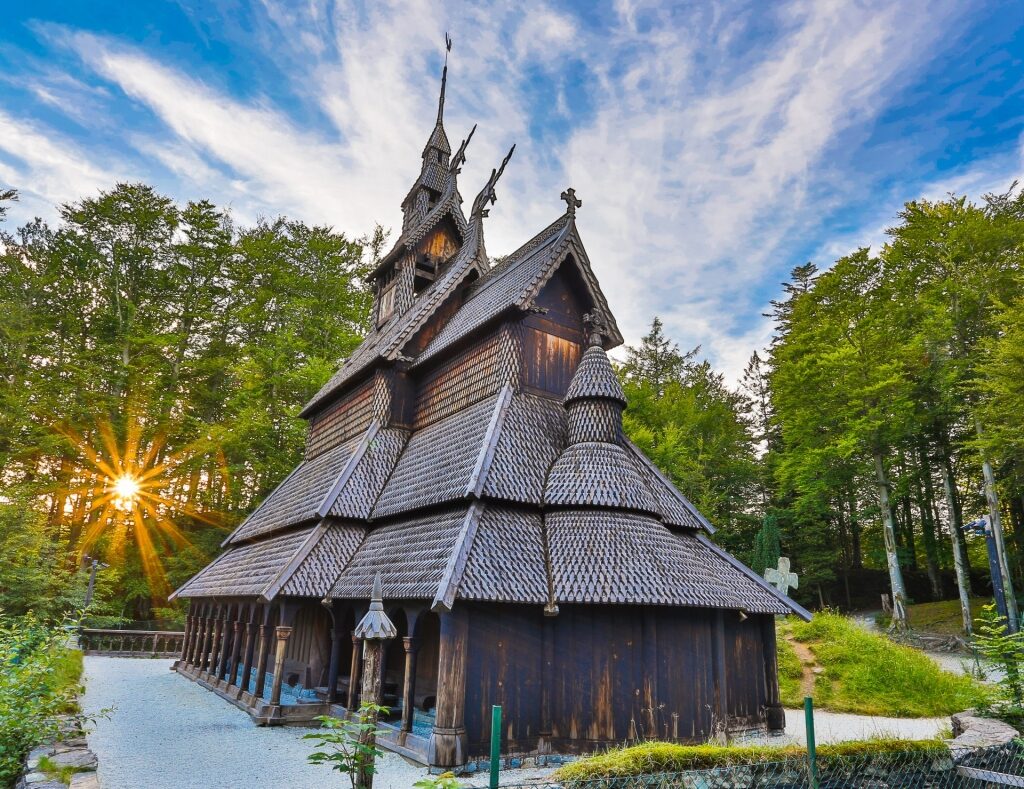
Fantoft Stave Church
Straight from a children’s storybook, Bergen’s most characterful church is arguably Fantoft Stave Church, just outside the city center. Originally built in 1170 in Fortun, some 177 miles northeast of Bergen, Fantoft Stave Church was moved to its current location in 1883, and rebuilt in its original form in 1997 following a fire caused by arson in 1992.
Gaze at the towering onyx-black church, perched on a hilltop in this leafy Bergen suburb. The style of architecture reflects traditional Norse mythology and early Christianity in Norway, with dragons on the exterior illustrating an early belief that they would ward off evil spirits.
The reconstructed church is built from centuries-old pine trees, with the original altar cross inside. Summer is the best time to visit, with the church open between May and September.
Marvel at Steinsdalsfossen
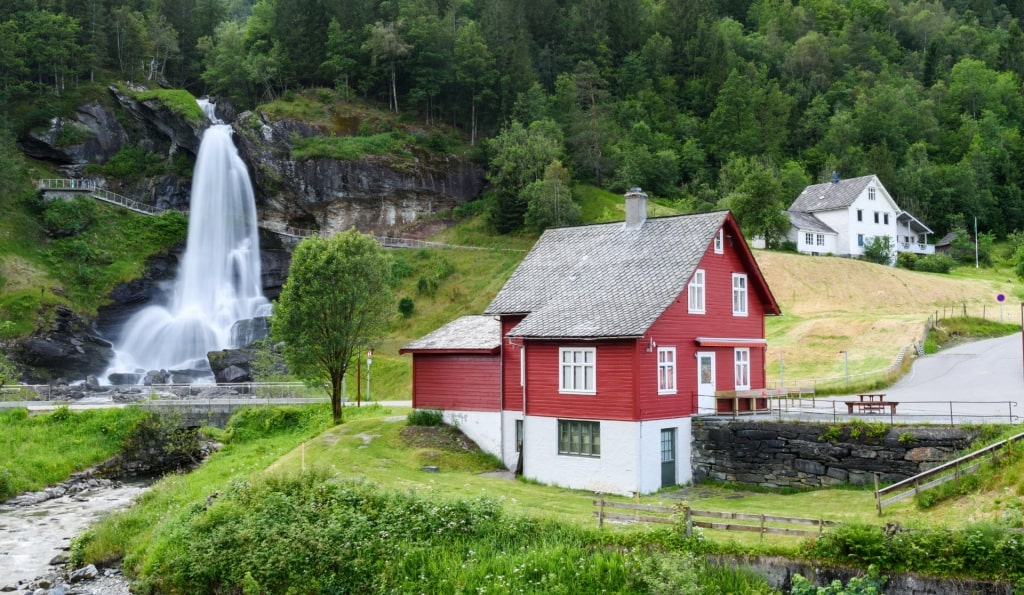
Steinsdalsfossen
Steinsdalsfossen is a sensational waterfall on the Fosselva River, near Norheimsund, around one hour east of Bergen, Norway.
What makes the 164-foot Steinsdalsfossen a star attraction? Visitors can walk behind this veil of foaming white water by following the path along the riverbank from the car park.
Soak in the astonishing views from the vantage point as you emerge from behind the waterfall, with scenery stretching across Norheimsund and the bucolic Steinsdalen valley. There’s a gift shop and café with outdoor seating next to the waterfall—take a seat to enjoy cake, coffee, and scenes of the cascading Steinsdalsfossen.
Check Out the Cathedral
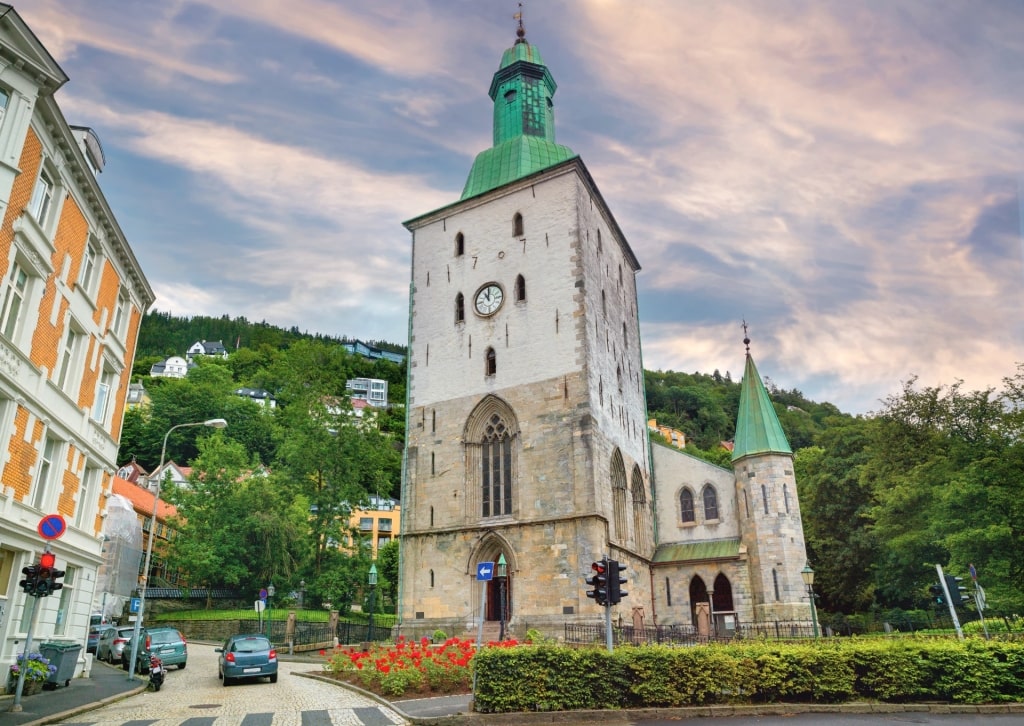
Bergen Cathedral
Bergen’s medieval cathedral, dedicated to Olaf II of Norway, was built around the 12th century, though it was rebuilt several times due to damage caused by fires.
There’s a single copper-topped tower and beautiful stained-glass windows above the altar. Look out for the cannonball embedded in the exterior stonewall, a lasting remnant of the 1665 Battle of Vågen, part of the Anglo-Dutch War.
Tour Bergen’s Museums
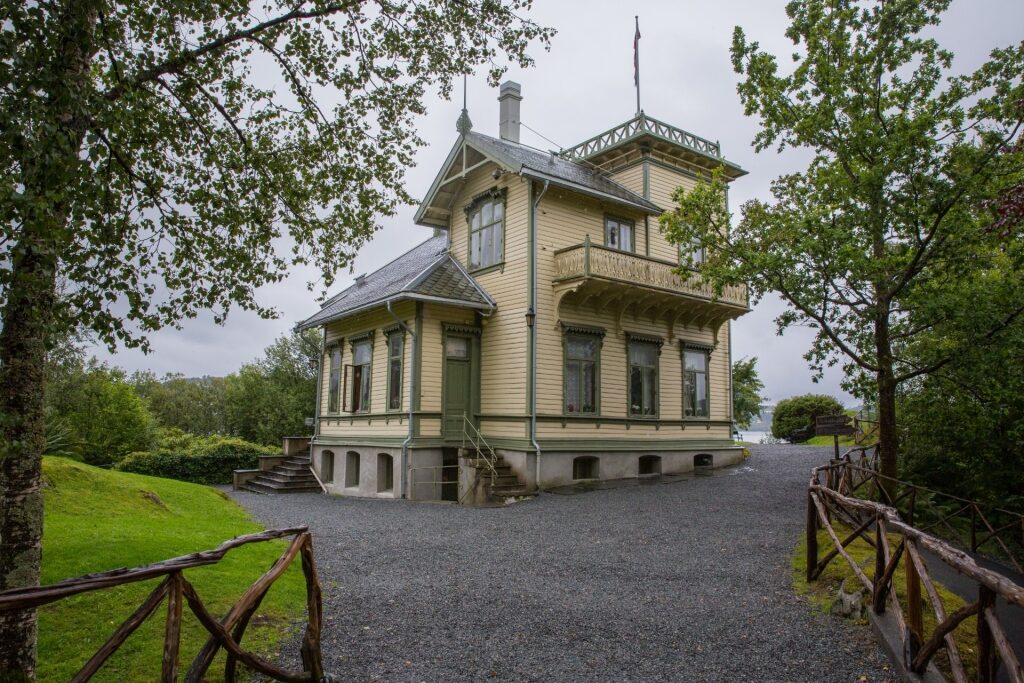
Troldhaugen
Bergen has some world-beating museums to explore. This Scandinavian city boasts its artistic prowess at Kode, a collection of four art museums—the Permanenten, Rasmus Meyer, Stenersen, and Lysverket—and three musical composers’ homes—Lysøen, Siljustøl, and Troldhaugen.
Highlights include the world’s third-largest collection of works by Norwegian artist Edvard Munch, including around 50 paintings and 100 works on paper, at the Rasmus Meyer museum.
Start by viewing the vast Munch collection at the Rasmus Meyer before visiting Troldhaugen, the handsome former villa of composer Edvard Grieg.
Grieg is to Norway what Mozart is to Austria. The composer lived at Troldhaugen with his wife, the singer Nina Grieg, composing many of his most celebrated works in his garden hut from 1885. This fascinating museum house and tranquil garden are open to visitors with lunchtime concerts performed every summer.
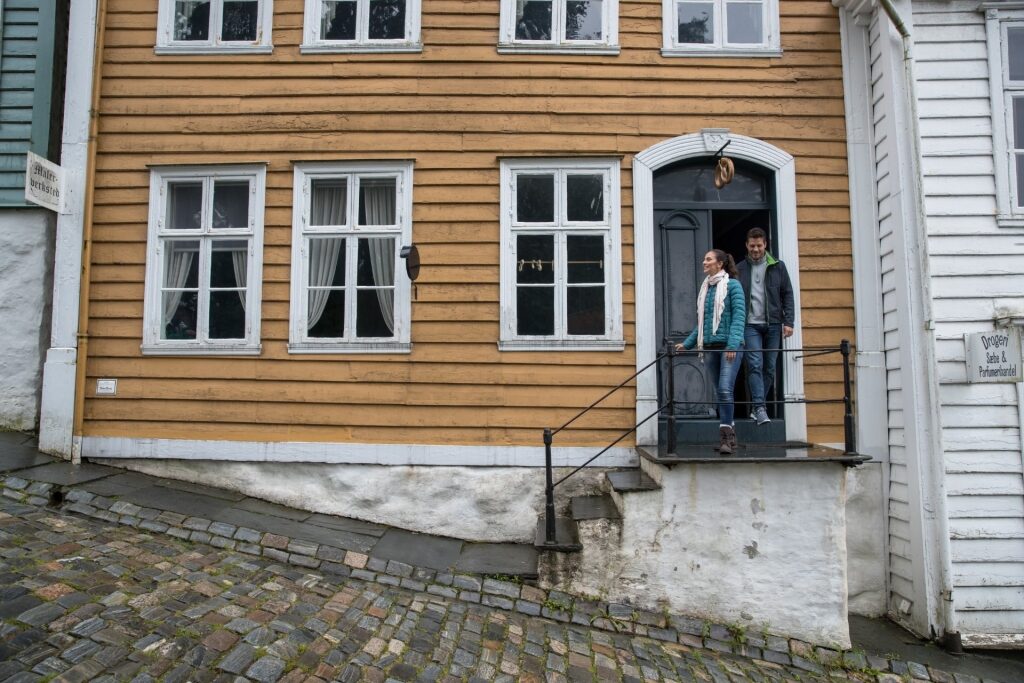
Old Bergen Museum
Visit the Hanseatic Museum to explore life for the city’s medieval merchant traders. Norway Fisheries Museum explores the country’s dynamic coast and illustrates the history of the fisheries, while the Old Bergen Museum shines a lens on Bergen’s colorful wooden houses, with white-picket fences in an open-air museum setting.
Ride the Fløibanen Funicular
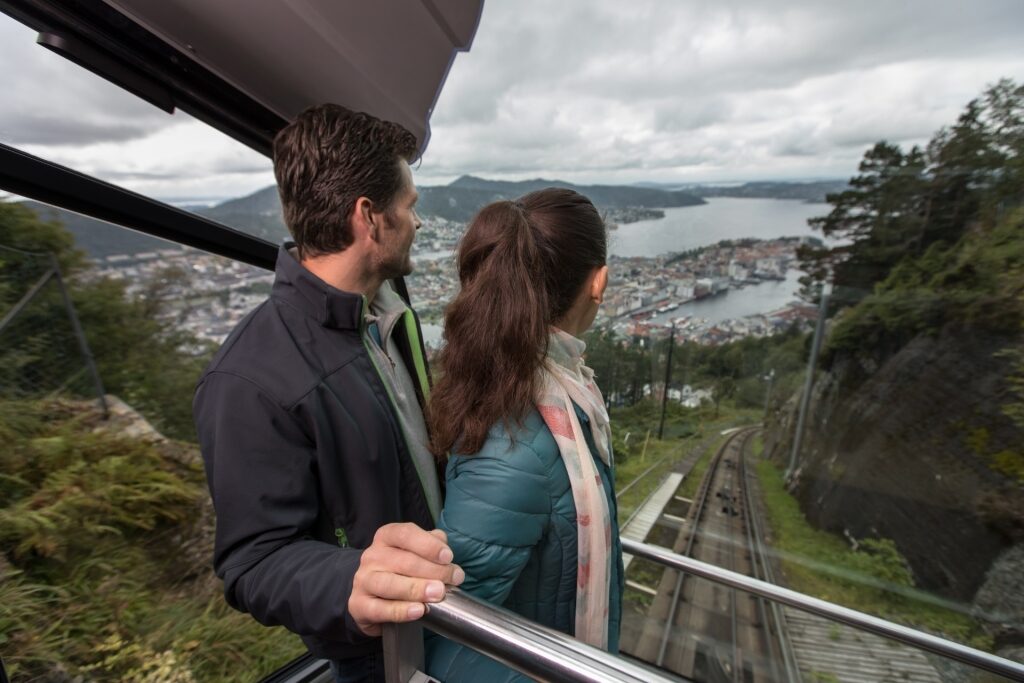
Fløibanen Funicular
A leisurely ride on the Fløibanen funicular to reach the 1,300-foot summit of Mt. Fløyen is one of the best things to do in Bergen. Shiny new blue-and-red funicular carriages take just six minutes to reach the top for spectacular views of Bergen and the fjords.
Facilities at Mt. Fløyen include a café, a restaurant, a shop, bathrooms, bike rental, hiking trails, and an outstanding children’s playground with an obstacle course within the mystical Troll Forest.
A short walk from the funicular terminal at the summit is Lake Skomakerdiket, one of Norway’s most serene lakes, where visitors can take out a canoe for free during summer.
Serious hikers might want to consider the five-hour “Vidden” yomp from neighboring Mt. Ulriken to Fløyen. When you arrive on Mt. Fløyen, enjoy a mouthwatering lunch of oysters, beetroot tartare, and summer tomato soup at Fløirestauranten, before taking the scenic funicular down to the center of Bergen.
Food & Drink
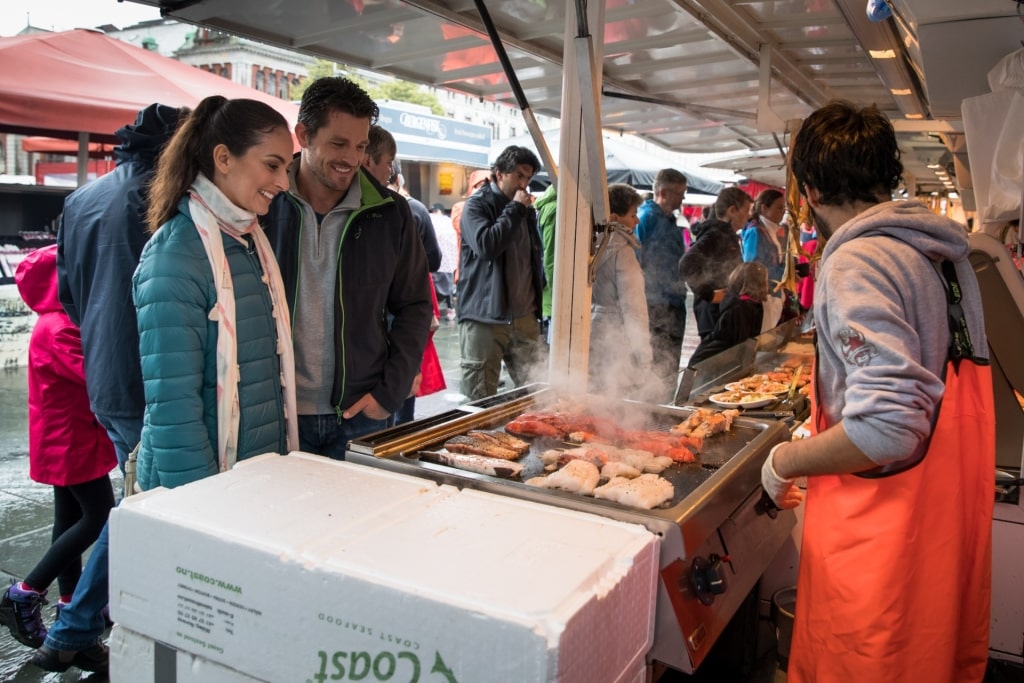
Fish Market
Naturally, seafood is big in Bergen, with regional specialties including fish cakes, fish soup, and a traditional cured cod dish called “persetorsk”.
The best place to savor Bergen’s superb seafood is the Fish Market’s Fish Me and Fjellskål restaurants. Here, visitors are spoiled for choice, with fresh sushi, oysters on ice, caviar, and a range of smoked and cured fish, including salmon, trout, and herring.
One of Bergen’s best restaurants is also the oldest, Bryggeloftet. Dine on traditional dishes of fish soup with dumplings and shrimps, steamed mussels, pan-fried scallops, fried mountain trout, reindeer filet, and Norwegian lamb, followed by warm apple pie with lashings of custard.
Another traditional Norwegian restaurant is the elegant Bryggen Tracteursted, where roasted whale is served with crushed baby potatoes, local Bergen sausage with caramelized onions, and Skagen, a dish of shrimp with a dill-flavored sour cream, is served with trout roe atop rye bread.
For a delicious cocktail, take a seat at the spectacular Frescohallen next to the harbor. Once the city’s stock exchange, Frescohallen is now part of the stylish Bergen Børs Hotel, and the soaring space is adorned with frescoes by the early 20th-century Norwegian painter Axel Revold.
Best Time to Visit Bergen
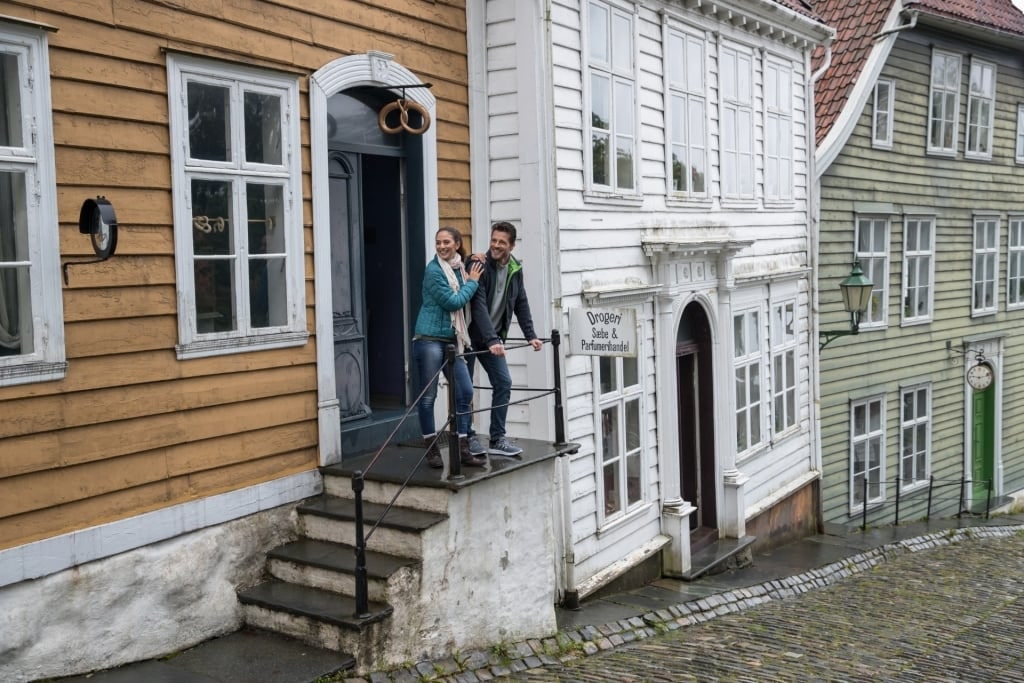
Old Bergen Museum
The best time to visit Bergen, Norway, is summertime, between May and September, when wildflowers bloom on mountain meadows, waterfalls are tumbling, and the temperature is mild.
Expect average temperatures of 59°F and highs of 77°F during summer. Rain is common, however, with 200 days of it per year, so remember to pack a waterproof jacket.
This mild climate is ideal for exploring Norway’s great outdoors and Bergen’s historic center. Some attractions such as Fantoft Stave Church are only open during summertime.
Read: Best Things to Do in Norway
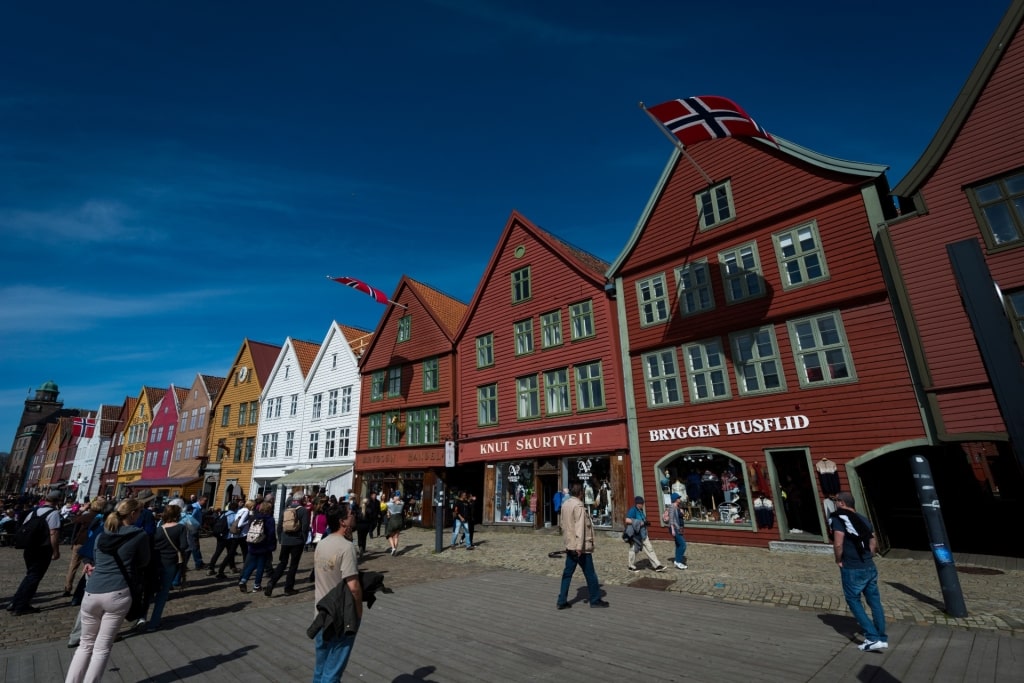
Bryggen
Under-the-radar Bergen is a wonderful destination for an unforgettable blend of nature, gastronomy, and culture. Explore our range of extraordinary cruises to Bergen and book your getaway today.



